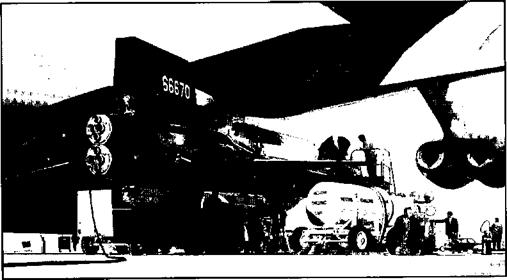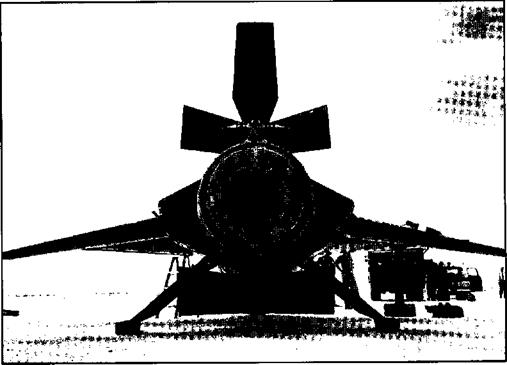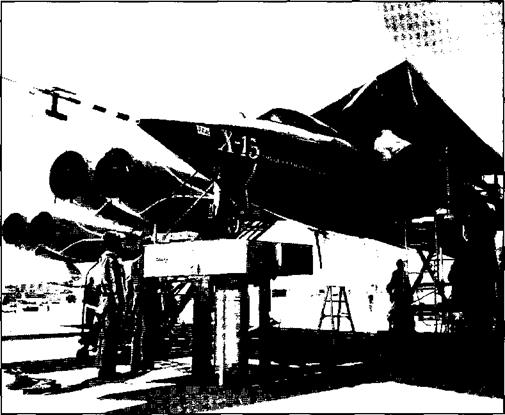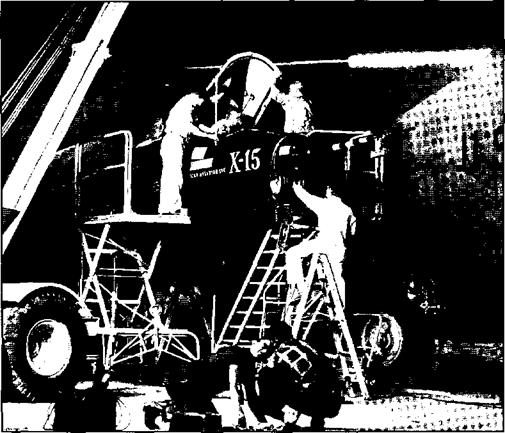Introduction and Author’s Comments

It is a beginning. Over forty-five years have elapsed since the X-15 was conceived; 40 since it first flew. And 31 since the program ended. Although it is usually heralded as the most productive flight research program ever undertaken, no serious history has been assembled to capture its design, development, operations, and lessons. This monograph is the first step towards that history.
Not that a great deal has not previously been written about the X-15, because it has. But most of it has been limited to specific aspects of the program; pilot’s stories, experiments, lessons-leamed, etc. But with the exception of Robert S. Houston’s history published by the Wright Air Development Center in 1958, and later included in the Air Force History Office’s Hypersonic Revolution, no one has attempted to tell the entire story. And the WADC history is taken entirely from the Air Force perspective, with small mention of the other contributors.
In 1954 the X-l series had just broken Mach 2.5. The aircraft that would become the X-15 was being designed to attain Mach 6, and to fly at the edges of space. It would be accomplished without the use of digital computers, video teleconferencing, the internet, or email. It would, however, come at a terrible financial cost—over 30 times the original estimate.
The X-15 would ultimately exceed all of its original performance goals. Instead of Mach 6 and 250,000 feet, the program would record Mach 6.7 and 354,200 feet. And compared against other research (and even operational) aircraft of the era, the X-15 was remarkably safe. Several pilots would get banged up; Jack McKay seriously so, although he would return from his injuries to
fly 22 more X-15 flights. Tragically, Major Michael J. Adams would be killed on Flight 191, the only fatality of the program.
Unfortunately due to the absence of a subsequent hypersonic mission, aeronautical applications of X-15 technology have been few. Given the major advances in materials and computer technology in the 30 years since the end of the flight research program, it is unlikely that many of the actual hardware lessons are still applicable. That being said, the lessons learned from hypersonic modeling, simulation, and the insight gained by being able to evaluate actual X-15 flight research against wind tunnel and predicted results, greatly expanded the confidence of researchers. This allowed the development of Space Shuttle to proceed much smoother than would otherwise have been possible.
In space, however, the X-15 contributed to both Apollo and Space Shuttle. It is interesting to note that when the X-15 was conceived, there were many that believed its space-oriented aspects should be removed from the program since human space travel was postulated to be many decades in the future. Perhaps the major contribution was the final elimination of a spray-on ablator as a possible thermal protection system for Space Shuttle. This would likely have happened in any case as the ceramic tiles and metal shingles were further developed, but the operational problems encountered with the (admittedly brief) experience on X-15A-2 hastened the departure of the ablators.
Many people assisted in the preparation of this monograph. First and foremost are Betty Love, Dill Hunley, and Pete Merlin at the DFRC History Office. Part of this project
was assembling a detailed flight log (not part of this monograph), and Betty spent many long hours checking my data and researching to fill holes. I am terribly indebted to her. Correspondence continues with several of the program principals—John V. Becker, Scott Crossfield, Pete Knight, and William Dana. Dr. Roger Launius and Steve Garber at the NASA History Office, and Dr. Richard Hallion, Fred Johnsen, Diana Comelisse,
and Jack Weber all provided excellent support for the project. A. J. Lutz and Ray Wagner at the San Diego Aerospace Museum archives, Tony Landis, Brian Lockett, Jay Miller, and Terry Panopalis also provided tremendous assistance to the project.
Dennis R. Jenkins Cape Canaveral, Florida February 2000
With the XLR99 engine lagging behind in its development schedule, the X-15 program decided to press ahead with initial flights using two XLR11 engines—the same basic engine that had powered the Bell X-1 on its first supersonic flight. (San Diego Aerospace Museum Collection)

 When the Reaction Motors XLR99 engine finally became available, the X-15 began setting records that would stand until the advent of the Space Shuttle. Unlike the XLR11, which was “throttleable” by igniting different numbers of thrust chambers, the XLR99 was a truly throttleable engine that could tailor its output for each specific mission. (San Diego Aerospace Museum Collection)
When the Reaction Motors XLR99 engine finally became available, the X-15 began setting records that would stand until the advent of the Space Shuttle. Unlike the XLR11, which was “throttleable” by igniting different numbers of thrust chambers, the XLR99 was a truly throttleable engine that could tailor its output for each specific mission. (San Diego Aerospace Museum Collection)

 Hydraulic lifts were installed in the ramp at the Flight Research Center {now the Dryden Flight Research Center) to lift the X-15 up to the wing pylon on the NB-52 mothership. (Jay Miller Collection)
Hydraulic lifts were installed in the ramp at the Flight Research Center {now the Dryden Flight Research Center) to lift the X-15 up to the wing pylon on the NB-52 mothership. (Jay Miller Collection)
The early test flights were conducted with a long air data probe protruding from the nose of the X-15. Notice the technician manually retracting the nose landing gear on the X-15, something accomplished after the research airplane was firmly connected to the wing of the NB-52 mothership. (San Diego Aerospace Museum Collection)










